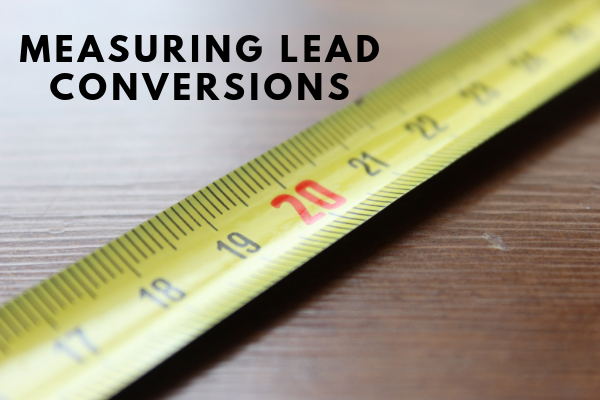7 Ways to Measure Your Lead Conversions
Measuring your lead conversions is essential when it comes to auditing your marketing strategy. If something’s not working and you’re not converting as many leads as you were hoping, you need to adjust your marketing approach and find new ways to reach and convert your target audience.
But you won’t know if your strategy is working unless you measure your lead conversions across several different categories.
With a limited budget and so many marketing channels to choose from, you need to make sure you’re putting your funds to good use. Learn how to analyze your lead conversion rate with these 7 metrics.
Conversion Rate by Channel
Considering there are over 120 different content delivery and marketing channels for you to choose from, you need to make sure you’re focusing on the right channels. From social media to blog posts and networking events, there are more ways to reach and convert consumers than ever before.
Measure your conversions based on the marketing channel the consumer used to discover your business, whether it was a banner ad on Google, a post on your LinkedIn page, or an organic conversion driven by SEO.
This will show you which channels tend to be the most effective with your target audience. You can focus your efforts on these channels instead of spreading your resources too thin.
If you’re struggling to find success on social media, attend a social media summit to learn more about the dos and don’ts of social media marketing.
Conversion Rate by Campaign
If you have several different marketing campaigns in the works, make sure you measure conversions by campaign, so you know which one is more effective when it comes to driving traffic and sales.
Launching multiple campaigns will increase the odds of your success, but one campaign is bound to be more successful than the other.
Separating your conversions by campaign gives you insight into what kinds of messages and content tend to resonate with your target audience. Continue refining your campaigns until you strike the right note.
Conversion Rate by Buyer Persona
Using the information you’ve gathered about your customers, separate your conversions by the buyer persona, including their age, gender, geographic location, income, and education.
You’ll quickly realize what kinds of consumers are most likely to buy your products or services, whether it’s upper-middle class women in the suburbs or young adults living in college towns.
This will help you further hone in on your target audience, so you can make the most of every dollar you spend on marketing.
Cost Per Conversion
Marketing can be expensive and you need to make sure you’re not spending more than you’re making. It’s all about ROI.
Track the cost of each conversion based on how much you’re spending on these marketing channels. Tally up the total number of conversions per channel and divide that by how much you spent on these channels. This will show you the true cost per conversion.
See how much you’ve spent on these channels over time. Ideally, your goal should be to lower the cost per conversion as much as possible by finding more cost-effective ways to reach your target audience.
Value Per Conversion
Once you have the cost per conversion, compare that to the value per conversion. This means how much money you’re making per conversion.
You’ll likely have to spend more per conversion when you’re just getting your brand off the ground, but over time the value per conversion should be greater than the cost per conversion.
If the tide doesn’t start to turn in your favor, rethink your marketing strategy and find more efficient ways of reaching your audience.
New Customer Conversion Rate
Your brand should always be growing.
Measure your conversions based on the number of new customers. This will likely be the first time these customers engage with your products or services. Examine what channels these first-time customers used to find your brand and how much you spent to convert them. See what kinds of reviews they leave and how likely they are to return for a repeat purchase.
Existing Customer Conversion Rate
You should also measure your lead conversions by the number of returning customers. Most business models need returning customers for sustained income.
Track how these customers found their way back to your website and whether they bought the same product or tried something new. The cost of converting repeat customers should be less than the cost to convert new ones. Encourage repeat customers to leave positive feedback on your products and services. Measure your repeat customer conversions will give you insight into what people really think of your brand. If no one returns for a repeat purchase, think about improving the quality of your products and services.
Use these metrics to measure your lead conversions and inform your marketing strategy.





